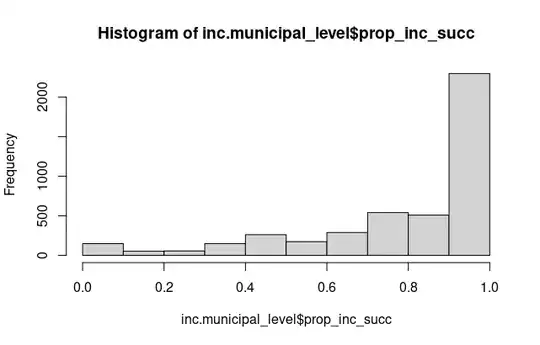I have a regression problem in which the outcome variable is a proportion with values in the interval $[0, 1]$. My question is related to this one which is about how to model an outcome variable with values $[0, 1]$. My question is different because I am asking what could be done to address the values that are undefined in the logistic function.
My outcome variable would need to be pre-transformed before the logistic transformation since the logistic transformation $\log(\frac{y }{1 − y})$ is undefined at $y = 1$, and about half of its values are equal to $1$. How would you recommend I overcome $y = 1$ being undefined in the logistic transformation function?
About half of the are values equal to 1, and this is the distribution:
